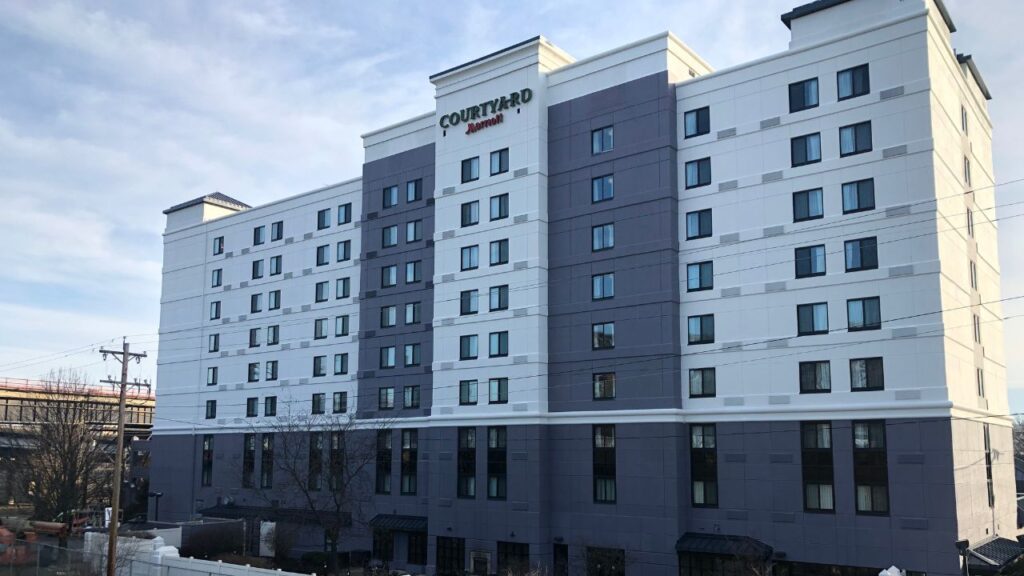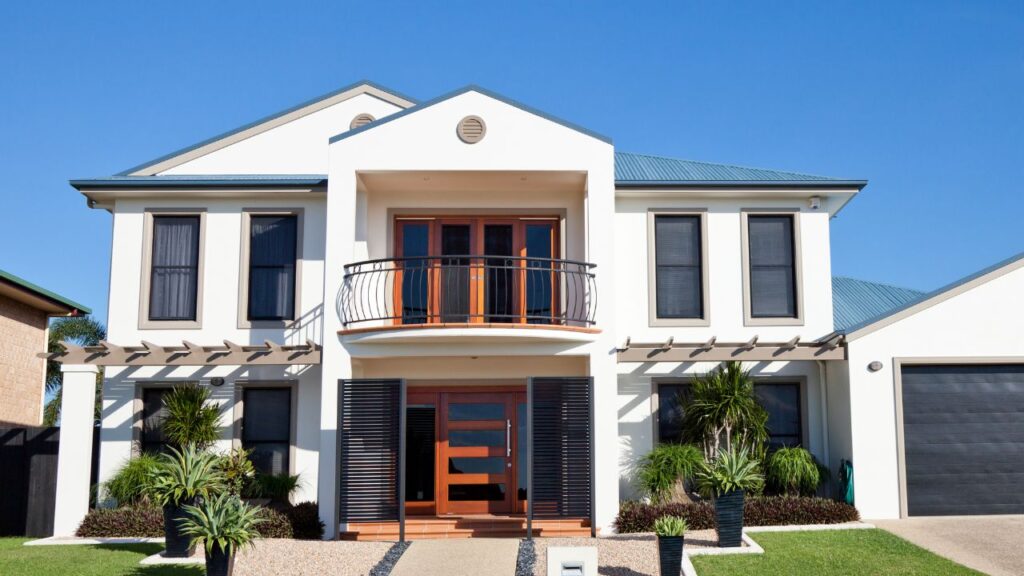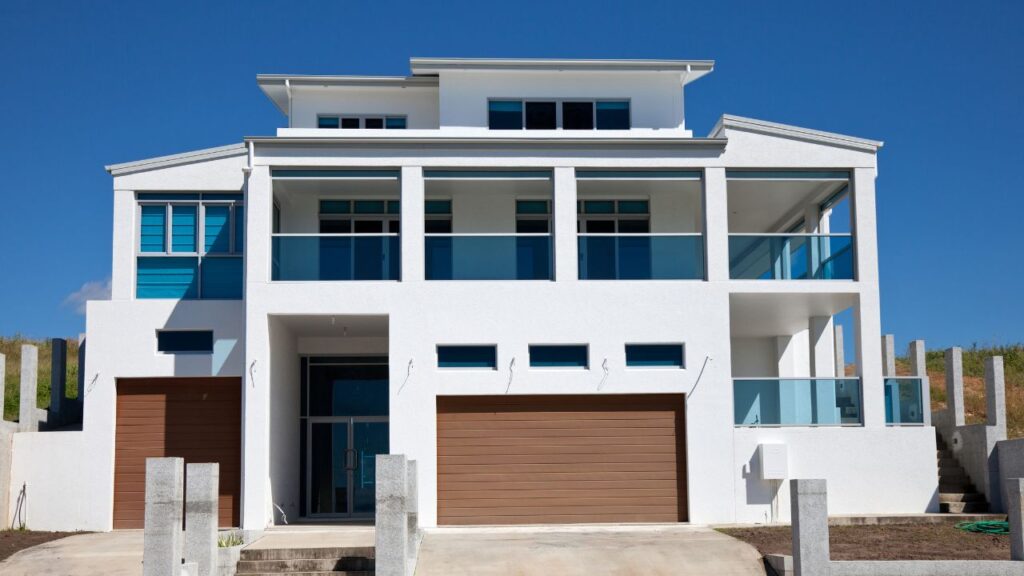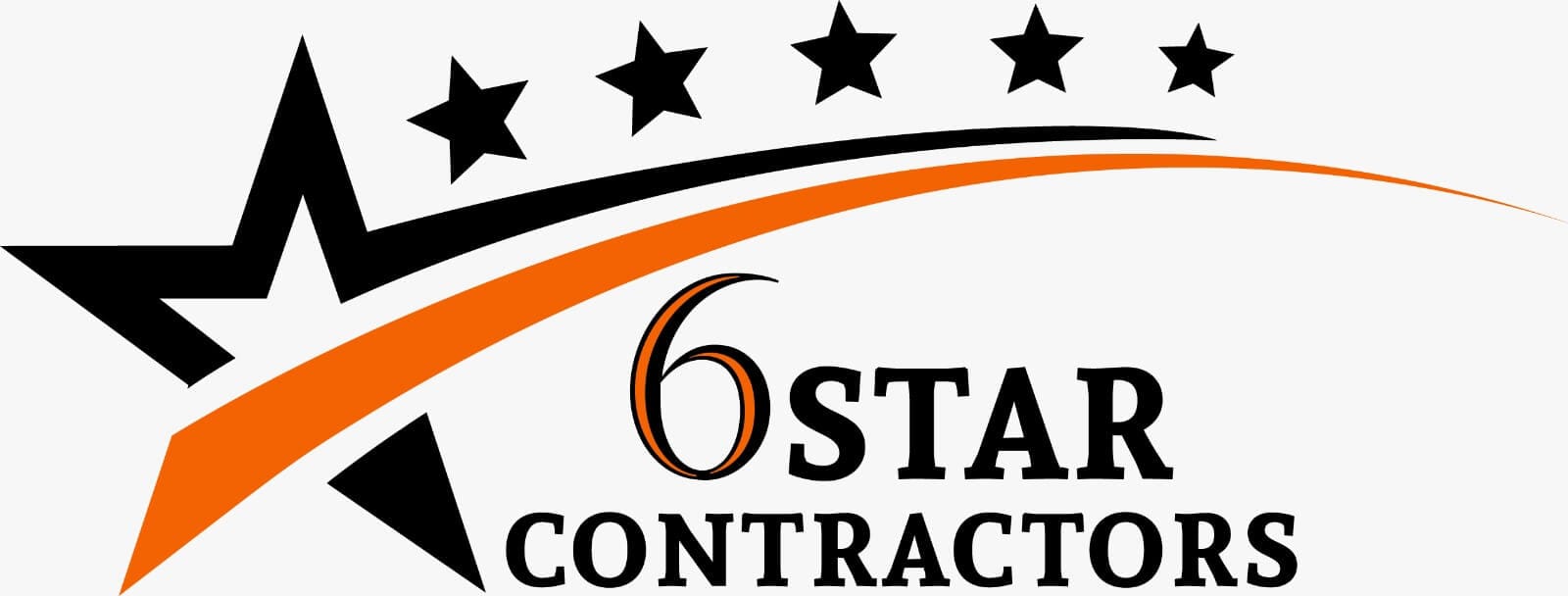Boost Your Painting Bids – Request a Precision Estimate!
- Accurancy
- Efficiency
- Transparency
- Customization
- Time Saving
- Professionalism
- Cost Control

Painting is a transformative and essential aspect of maintaining the aesthetics and durability of your townhouse. Whether you’re planning to refresh the existing color or embark on a complete exterior makeover, understanding the factors that contribute to townhouse painting costs is crucial for effective budgeting. In this guide, we will explore the various elements that influence the overall expense and provide insights into estimating the cost of painting your townhouse.
The size of your townhouse is a pivotal factor that goes beyond mere aesthetics; it significantly influences the costs associated with painting. A larger townhouse inherently entails a greater total surface area to be painted, necessitating more paint, additional labor, and an extended timeframe for completion. The sheer scale of the project impacts the overall budget, making it imperative for homeowners to consider the size and dimensions of their townhouse when estimating painting costs. From calculating the amount of paint required to determining the manpower needed, the size of the townhouse serves as the foundational element in the entire cost estimation process.

The choice of exterior material for your townhouse plays a crucial role in dictating painting costs. Each material, be it wood, stucco, brick, or vinyl, has its unique characteristics and requirements. Wood might demand specific primers and paints for optimal adhesion, while stucco may necessitate extensive preparation to address surface irregularities. The type of material directly influences both the type of paint needed and the preparatory work involved, adding layers of complexity to the overall expense. Homeowners must carefully consider the material of their townhouse’s exterior to ensure accurate cost estimates and successful project planning.
The condition of the existing paint and surfaces serves as a linchpin in the estimation of painting costs. Extensive preparation work, including tasks such as scraping off old paint, sanding surfaces, or repairing damaged areas, adds a layer of intricacy to the project. The more extensive the preparation required, the more time and labor are invested, subsequently contributing to higher overall expenses. A thorough assessment of the existing conditions and necessary preparatory measures is essential for an accurate cost estimate and the successful execution of the painting project.
The architectural features of your townhouse, particularly the number of stories it encompasses, directly impact the accessibility for painters. Taller structures or those with complex architectural elements may require specialized equipment and additional safety measures, contributing to increased overall costs. Factors such as the need for scaffolding, safety harnesses, or other accessibility equipment are pivotal considerations that must be factored into the estimation process. The height and complexity of the townhouse influence not only the physical demands of the job but also the associated costs of ensuring a safe and efficient painting process.
Selecting the type and quality of paint is a decision that reverberates through both immediate and long-term costs. High-quality paints, while often carrying a higher price tag, offer superior durability and longevity. Investing in premium paints can potentially reduce maintenance expenses over time, making them a strategic choice for homeowners seeking a cost-effective and lasting solution. The decision on paint quality involves a careful consideration of budget constraints, aesthetic preferences, and the desire for a durable finish that withstands the test of time.

Labor costs represent a significant component of townhouse painting expenses, encompassing local labor rates, the complexity of the job, and the expertise required for specific tasks. Skilled painters may charge more for intricate work or specialized techniques, contributing to variations in labor costs. The intricacy of the project, including factors like architectural detailing or challenging surface conditions, directly influences the time and skill required, thereby impacting labor expenses. Homeowners must account for these labor-related factors when estimating painting costs to ensure a fair and realistic budget.
Architectural details, trim work, and additional features like shutters and doors contribute to the aesthetic appeal of a townhouse but also influence painting costs. The inclusion of these elements in a painting project requires additional time and attention from painters, impacting the overall cost. Whether it’s delicately addressing intricate trim work or applying precise coats of paint to doors and shutters, these detailing aspects contribute to the overall labor intensity of the project. Homeowners seeking a comprehensive and finely finished paint job must factor in the cost implications of including additional features in their painting project.
In a world increasingly focused on environmental sustainability, complying with regulations and opting for eco-friendly paints can influence the costs of townhouse painting projects. Some regions may have restrictions on certain types of paints due to environmental concerns, leading to a potentially higher cost associated with using approved environmentally friendly options. Homeowners committed to minimizing their environmental footprint through paint choices need to consider the cost implications of adhering to regulations and embracing eco-conscious painting practices. The balance between environmental responsibility and budget considerations becomes a critical aspect of the overall cost estimation process.

Painting a townhouse involves various factors that contribute to the overall cost, including size, siding type, and the number of stories. On average, the cost for painting a townhouse falls in the range of $1,200 to $5,832. For townhouses of average size, the painting expenses typically vary between $4,860 and $13,200. Hiring a professional painter can cost anywhere from $240 to $8,640, with variations based on the size and complexity of the job. In general, the cost of painting a house, regardless of it being a townhouse or a standalone property, ranges from $1,739 to $4,258, with the national average standing at approximately $2,963. For the interior of a home, the average cost comes to around $2.64 per square foot. It’s essential to consider these adjusted cost estimates when planning a townhouse painting project to ensure a realistic budget and a successful outcome.
Gathering quotes from various reputable painting contractors provides a comprehensive understanding of the market rates and services. This comparative approach not only aids in assessing the financial aspects but also allows you to evaluate the expertise and additional offerings of different contractors. By casting a wide net, you empower yourself to make an informed decision, selecting a contractor who not only fits your budget but also aligns with your specific requirements and expectations for the townhouse painting project.
Prioritizing and optimizing preparation work is a crucial aspect of cost-effective townhouse painting. Thoroughly assessing the condition of existing paint and surfaces allows you to identify potential issues in advance. Addressing these issues through scraping, sanding, or necessary repairs during the preparation stage helps prevent unforeseen challenges and costs during the actual painting process. By investing time and resources in comprehensive preparation, you set the stage for a smoother and more efficient painting project.

When considering townhouse painting costs, the choice of paint quality plays a pivotal role. While opting for high-quality paint may involve a higher upfront cost, it often proves to be a strategic investment. Quality paints offer enhanced durability, longevity, and resistance to elements, potentially reducing the frequency of maintenance and repainting. By choosing premium paint products, you contribute to the long-term protection and aesthetic appeal of your townhouse, ultimately leading to cost savings over the life of the painted surfaces.
Bundling additional services with your townhouse painting project can be a cost-effective strategy. Many painting contractors offer package deals that include minor repairs, surface preparations, or other related services. Opting for bundled services not only streamlines the overall project management but can also result in financial savings compared to securing individual services separately. This approach allows you to address multiple aspects of maintenance and enhancement in a consolidated and economical manner.
Strategically scheduling your townhouse painting during off-peak seasons can yield substantial cost savings. Off-peak periods often experience reduced demand for painting services, prompting contractors to offer lower rates to attract clientele. By planning your project during these times, you take advantage of potential discounts without compromising the quality of the work. This strategic timing ensures that your townhouse receives the necessary attention and enhancement while optimizing your budgetary considerations.
Estimating the cost of painting your townhouse involves considering factors such as size, exterior material, preparation work, number of stories, paint quality, labor costs, additional features, and environmental considerations. The cost range for townhouse painting falls between $1,200 and $5,832, with various elements influencing the final expense. To manage costs effectively, obtaining multiple quotes, optimizing preparation work, choosing quality paint, bundling services, and scheduling off-peak painting are key strategies. These approaches empower homeowners to achieve a balance between budget considerations and the desire for a well-executed and aesthetically pleasing townhouse painting project.
The cost of painting a townhouse is influenced by various factors, including the size, exterior material, preparation work, number of stories, quality of paint, labor costs, additional features, and environmental considerations. Each of these elements contributes to the overall expense and should be carefully considered when estimating the cost of a painting project.
The size of the townhouse directly impacts the total surface area to be painted, requiring more paint, labor, and time for larger structures. Homeowners need to consider the dimensions of their townhouse to accurately estimate the quantity of paint needed and determine the manpower required, influencing the overall budget for the project.
The choice of exterior material, whether it’s wood, stucco, brick, or vinyl, influences painting costs due to unique characteristics and preparation requirements. Different materials may demand specific primers or extensive surface preparation, adding complexity to the overall expense. Homeowners must consider the material of their townhouse’s exterior for accurate cost estimates and project planning.
Labor costs include local rates, the complexity of the job, and the expertise needed. Skilled painters may charge more for intricate work or specialized techniques, impacting variations in labor costs. The intricacy of the project, such as architectural detailing or challenging surfaces, directly influences the time and skill required, affecting overall labor expenses.
Cost-saving strategies include obtaining multiple quotes from reputable contractors, optimizing preparation work to address issues in advance, choosing quality paint for long-term durability, bundling services for efficiency, and scheduling painting during off-peak seasons to potentially benefit from lower contractor rates. These strategies help homeowners manage costs effectively while achieving a successful townhouse painting outcome.
Here I am going to share some steps to get an townhouse painting cost estimate report.
You can send us your plan on info@estimatorflorida.com
Before starting your project, we send you a quote for your service. That quote will have detailed information about your project. Here you will get information about the size, difficulty, complexity and bid date when determining pricing.
Our team will takeoff and estimate your project. When we deliver you’ll receive a PDF and an Excel file of your estimate. We can also offer construction lead generation services for the jobs you’d like to pursue further.



561-530-2845
info@estimatorflorida.com
Address
5245 Wiles Rd Apt 3-102 St. Pete Beach, FL 33073 United States
561-530-2845
info@estimatorflorida.com
Address
5245 Wiles Rd Apt 3-102 St. Pete Beach, FL 33073 United States
All copyright © Reserved | Designed By V Marketing Media | Disclaimer